COP28 Chronicles: Navigating Ambitions, Building Bridges, and Shaping Tomorrow
Meet Juma Said Tusubila, a CARP scholar from Makerere University in Uganda, as he shares his experience at COP28
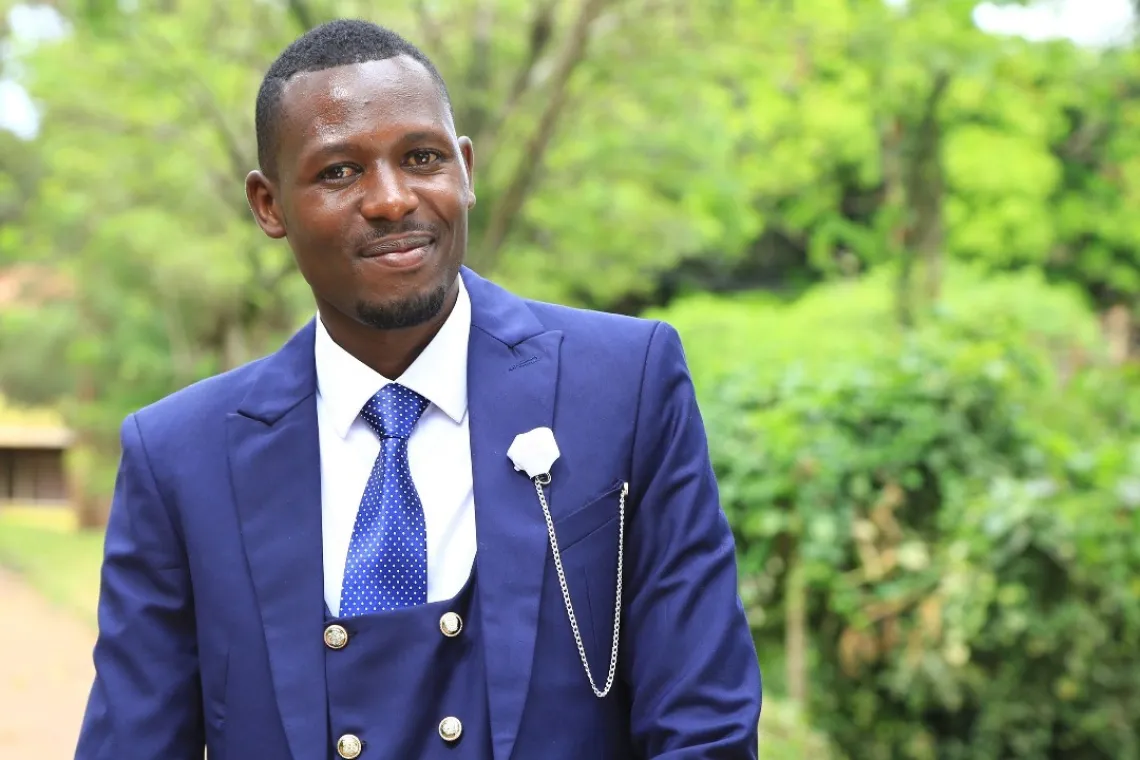
Juma Said Tusubila
From the exhilarating moment I discovered my selection as a CARP ambassador for COP 28, anticipation rippled through me. This was my golden ticket to participate in a world-renowned event, surrounded by a sea of researchers, policymakers, and activists. The prospect of representing CARP at such a monumental gathering fueled my excitement.
As the curtains lifted on COP 28, my role was clear - traverse the pavilions, share the word about CARP's mission, pinpoint crucial research areas in climate adaptation and disaster risk reduction (DRR), and identify potential webinar speakers and CARP network members. The sprawling event, hosting over 100,000 individuals from around the world, set the stage for an exciting and interesting week. Embarking on the COP28 journey as a CARP ambassador was a whirlwind of networking and profound insights into the intricate tapestry of global climate action. Each day unfurled new layers of anticipation, discovery, and connections, leaving an indelible mark on my perspective as an early career climate adaptation researcher.
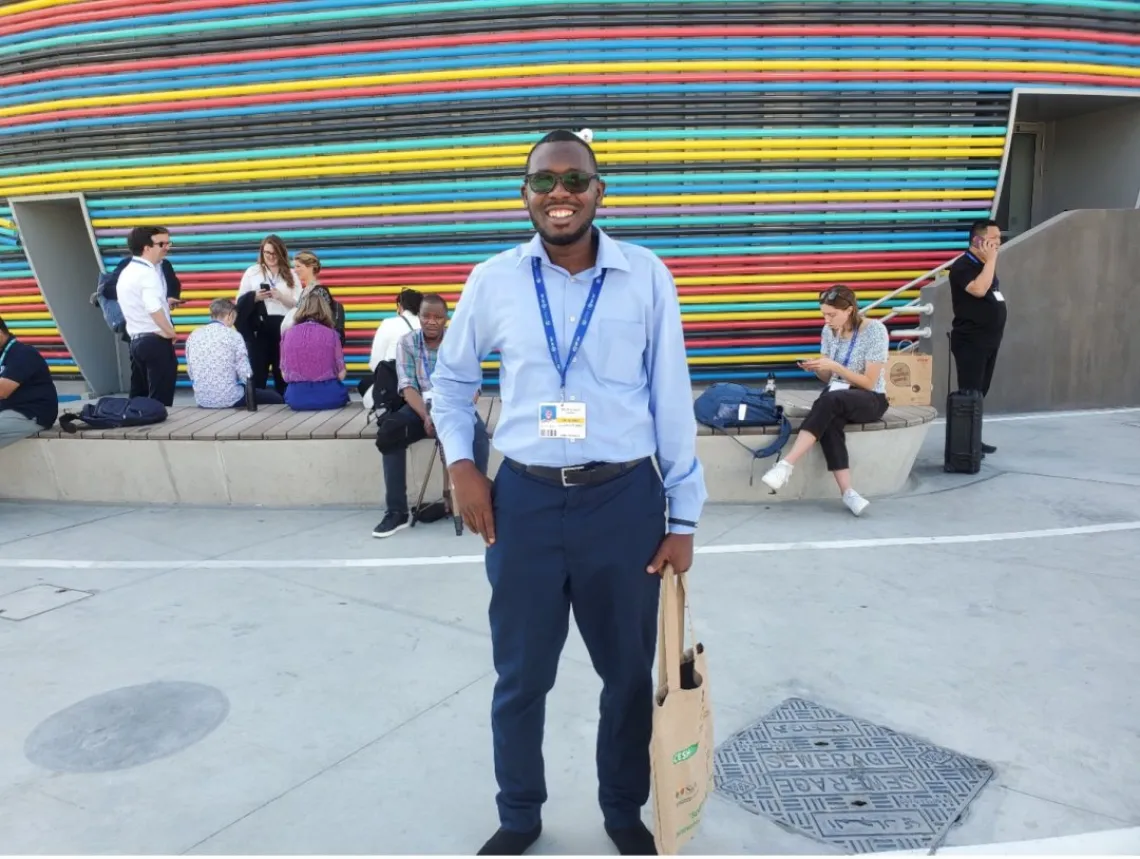
Juma Said, CARP scholar from Uganda, attends COP28 in Dubai
Day One: Expo Adventure
Over breakfast, I connected with my CARP colleague, Mabel Wantim from Cameroon. We shared our excitement and expectations about the adventure we were about to embark on, and our day proceeded with an infectious energy that only a global event like COP28 could muster.
Metro misadventures aside, the Expo Village queue for registration, which initially seemed an obstacle, transformed into a communal space for forging connections. Government officials from Burundi and an insightful Brazilian investor, Gilberto, became unexpected allies. Our chance meeting with Dutch journalist Edwin Timmer on the Metro added depth to the day, especially as he showed genuine interest in CARP, shedding light on the operationalization of the Loss and Damage fund which was the biggest news item from the first day of COP28.
Day Two: Exploring and Networking
Day Two unfolded with optimism and an eagerness to delve deeper into the COP28 experience. At the Humanitarian Hub in the Green Zone, we attended a panel discussion on the Loss and Damage fund. Here, we met Taylor Brooke from the University of Arizona and Adessou Kossivi from the Global Network on Disaster Risk Reduction (GNDRR) who was the panel chair. Panelists discussed improving access to the Loss and Damage fund for vulnerable communities, and emphasized accountability, inclusivity of special groups, capacity building of policy makers, expansion of the fund, and the need for evidence for loss and damage. I shared a story from my rural upbringing in Uganda, where sugar was always scarce and children used to steal spoonfuls of sugar, an anecdote that reminded me of loss and damage. To my surprise, everyone liked my example and thanked me at the end of the discussion.

Meeting Addesou Kossivi from GNDRR
We then visited various pavilions, including the African, Youth, Uganda, and Cameroon Pavilions, and engaged with Ugandan Legislators on the parliamentary Committee of Agriculture and Climate Change. CARP connections took root, with United Nations University – Institute of Environment and Human Security (UNU-EHS) researcher Soenke Kreft expressing a keen desire for collaboration. To close off the day, I met the Lead Negotiator for Uganda on Climate Technology who helped me to get contacts of key negotiators at COP. That evening, I reached my room at the Hilton Garden Inn at the Mall of Emirates exhausted but feeling accomplished for the day.
Day Three: Negotiations and Panels
Day three began with a rollercoaster of high anticipation coupled with some disappointment. I had been invited to attend a meeting with the African Group of Negotiators by Professor Kaddu, the lead negotiator from Uganda. However, delays in the metro trains unfortunately caused me to miss the meeting. Limited access to plenary sessions with the Observer Badge posed another challenge, but I was able to gain valuable insights through my immersion in a Technology Transfer negotiation session, as well as during a panel session led by the University of Arizona’s Taylor Brooke on "Climate Change and Health”. I used the opportunity to present the challenge of a lack of health data in many African countries, which makes it difficult to generate accurate and reliable evidence from Africa. Connections with Dr. H. Mohammed and Prof. Moses Oludayo Tade added diversity to our network.

Meeting Taylor Brooke from the University of Arizona, along with Prof. Moses Oludayo Tade and Dr. H. Mohammed, at a panel discussion on climate change and health.
Day Four: Health Focus
Laden with fatigue from the previous day, I transitioned to online sessions for most of the morning. Engaging with Marissa Kimsey from the University of Oxford and a female Moroccan graduate working in sustainable agriculture sparked interest in potential collaborations. The Uganda Pavilion session on Health Vulnerability and Adaptability Assessment (VAA) and Health National Adaptation Plan (HNAP) was a highlight for me due to the connections with my CARP research. At this pavilion I met prominent figures like the Uganda Minister of Health, the former Deputy Vice-Chancellor of Makerere University, and members of the Parliament of Uganda Climate Change committee, and learned about Uganda’s substantial financial commitments to climate and health funding.
Later, I attended a session on bridging the science-policy-practice gap hosted by UNEP and the Adaptation Alliance and visited the African Pavilion to attend the Youth Adaptation Awards. At the awards session, I connected with youth activists and a Professor on Climate Policy from Oxford University.
The day's major highlight was a panel discussion on "Transforming Humanitarian Assistance," hosted by Sarah Charles from USAID, with panelists from UNDRR, the World Bank, GNDRR, and the Green Initiative. This discussion provided insights into funding dynamics for climate change and DRR, as well as the operationalization of the Loss and Damage Fund. Ending the day with a visit to the Dubai Mall, I was struck by the development in Dubai, particularly the mega aquarium and the gigantic Burj Khalifa, and felt hopeful about Africa's potential for similar progress if we dream big and work towards it.
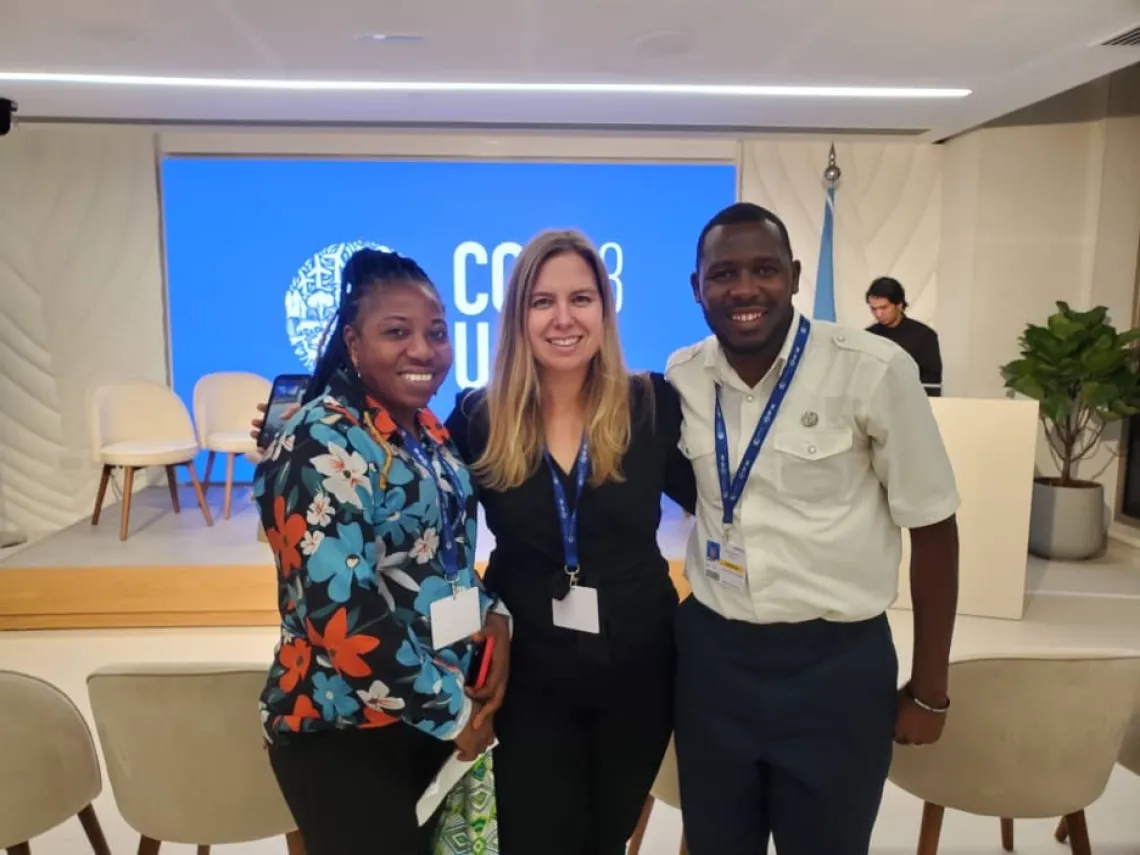
Meeting Sarah Charles from USAID’s BHA
Day Five: Gender Focus
Day Five at COP28 focused on gender-related discussions, including land and drought issues, early warnings, and climate mobility. I supported my colleague Mabel in a panel discussion on land drought. The panelists highlighted issues on soil pollution in Africa and the role of healthy soils in achieving climate adaptation. Visiting the Mobility pavilion hosted by International Organisation of Migration (IOM), I then interacted with youth volunteers from various regions, gaining insights into the unique challenges of climate mobility, particularly in Pacific Island nations. I learnt that mobility is not only displacement but all other movements brought by climate change – an area that calls for evidence and solutions in Africa. Navigating African pavilions, I connected with AGNES, a group focusing on vulnerability assessments in African countries, and engaged with Mamadou Barro and Mona from the University of Arizona’s Anthropology Department. We visited the Green Zone and tasted some Emirati cuisines.
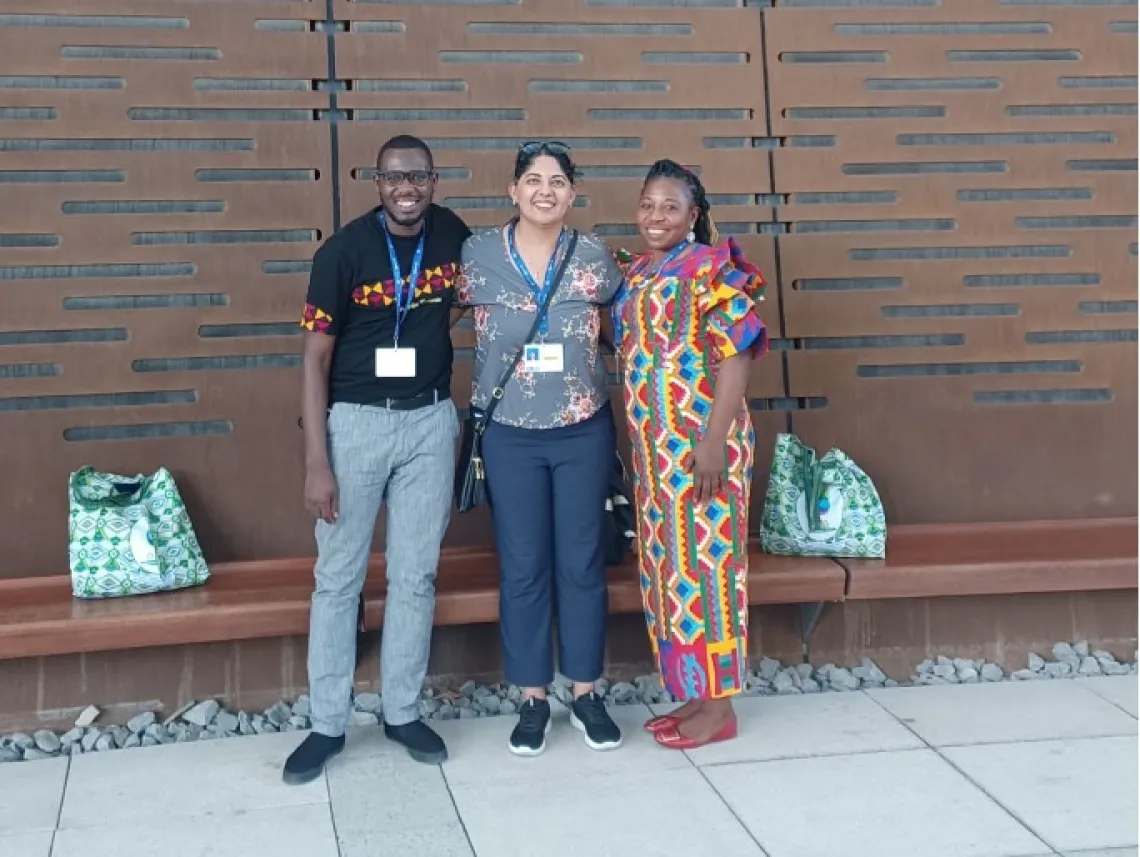
Meeting with Mona from the University of Arizona
Although I had to fight my way through crowds and stand in long queues, I was grateful to attend the Observers’ meeting with the COP Presidency. The COP President, Dr. Sultan Al Jaber, clarified a number of issues such as access to plenary sessions, and emphasized that the large numbers of participants were due to the inclusive design of the meeting (Uganda's delegation included 606 members!). The diverse representation, particularly from indigenous groups, developing nations, and youth, also highlighted the universality of the climate crisis. I connected with the head of RINGO (Research Institutions Non-Government Organisations), who shared my concerns about the lack of climate change evidence from Africa and the absence of research networks.
Day Six: Closing Ambitions
As I started my final day, I felt anxious about my COP 28 journey ending as I wanted to maximize the remainder of my time at the meeting. I decided to visit the Green Zone and tour exhibtions that I had not visited previously that week. I was captivated by the Gen Z climate change meeting and the COP concerts. I explored pavilions of Latin America and Caribbean countries trying to seek connections to university delegations.
That night, the Al Wasl dome was adorned with beautiful dazzling lights and serene music, drawing delegates in for the COP Concert. However, looking at my COP 28 App, I saw there was a Presidents Round table discussion for young parliamentarians. I felt that this would be a better way to spend my limited time, and I dashed off to the Al Ghaffa plenary. The meeting rooms were impressive and the waiting area was elegant. The round table was full of great discussions by young leaders. I was happy when issues of research, evidence and funding were presented by the youth. I connected with a young parliamentarian from Egypt and an early career researcher from Lebanon.
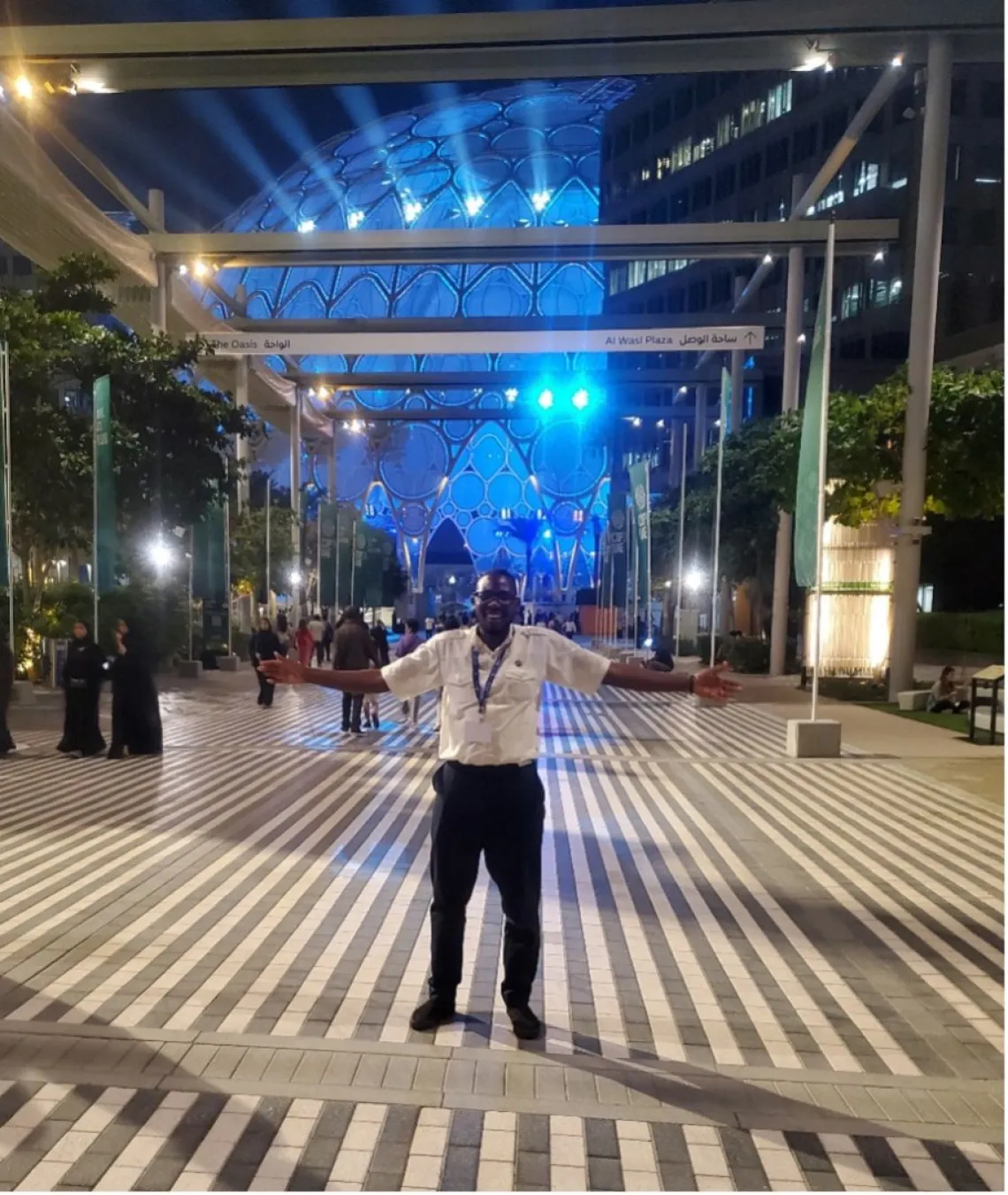
Standing in front of the huge Al Wasl dome
As I left the plenary, I learnt of a mock plenary session on the COP decisions, which I attended as my final activity at COP. My body felt tired from the six days of canvassing the pavilions and sessions, but I felt immense joy at having experienced the COP process. I would be returning to Uganda with many stories and memories.
Reflections and Gratitude
Reflecting on this journey, the word that encapsulates the essence of COP28 is "Ambition." Driven by leaders like COP President Dr. Sultan Al Jaber, the event instilled a sense of purpose and elevated the bar for climate action. Heartfelt gratitude is extended to the CARP Project and the University of Arizona for providing this transformative opportunity. The adventure may have ended, but the impact of COP28 will resonate in my work and aspirations for years to come, echoing the collective commitment to shaping a sustainable tomorrow.
